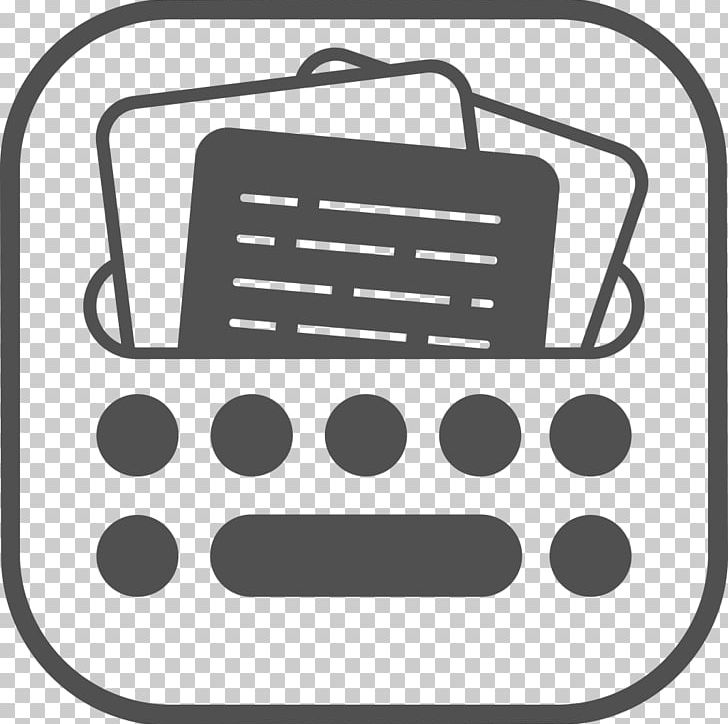Beamer 3 1 Download Free

Product Details The Beamer 3 builds on the best features of the Beamer 2. A completely redeveloped Beamer 3 riser system improves opening, operation and installation – the success story continues! The top four Beamer 3 characteristics Fast opening Opening time is the most important reserve criterion. If a reserve has to be thrown at low altitude – and that is often the case – a single. Safety Harness Inspection Checklists for fall protection equipment. Safety Harness Equipment Inspection Checklist. Harness & Lanyard Inspection Checklist. Fall Protection Site Safety Inspection Report Form. Download free checklists on iAuditor to perform paperless inspections on your handheld device.
Download codeBeamer ALM's free 30-day evaluation version, or start a cloud-hosted SaaS trial of codeBeamer ALM by Intland Software.
Beamer is a powerful and flexible LaTeX class to create great looking presentations. This article outlines the basis steps to making a Beamer slideshow: creating the title page, adding a logo, highlighting important points, making a table of contents and adding effects to the slideshow.
- 2Beamer main features
- 4Customizing your presentation
Introduction
A minimal working example of a simple beamer presentation is presented below.
After compilation, a two-page PDF file will be produced. The first page is the titlepage, and the second one contains sample content.
The first statement in the document declares this is a Beamer slideshow: documentclass{beamer}
The first command after the preamble, frame{titlepage}, generates the title page. This page may contain information about the author, institution, event, logo, and so on. See the title page section for a more complete example.
The frame environment creates the second slide, the self-descriptive command frametitle{Sample frame title} is optional.
It is worth noting that in beamer the basic container is a frame. A frame is not exactly equivalent to a slide, one frame may contain more than one slides. For example, a frame with several bullet points can be set up to produce a new slide to reveal each consecutive bullet point.

Beamer main features
The Beamer class offers some useful features to bring your presentation to life and make it more attractive. The most important ones are listed below.
The title page
There are some more options for the title page than the ones presented in the introduction. The next example is a complete one, most of the commands are optional.
The distribution of each element in the title page depends on the theme, see the Themes subsection for more information. Here is a description of each command:
- title[About Beamer] {About the Beamer class.}
- This is important, the title of your presentation must be inside braces. You can set an optional shorter title in the square brackets: in the example, this is About Beamer.
- subtitle
- Subtitle for you presentation. This can be omitted if unnecessary.
- author[Author, Doe]{A.~B.~Arthurinst{1} and J.~Doeinst{2}}
- First, a short version of the authors' names, comma separated, can be added inside square brackets. This is optional, if omitted the full name is displayed (at the bottom of the title page in the example). Then, inside braces, are the full names of the authors, separated by an and command. There's also a inst{1} command that puts a superscript to reference the institution where each author works; it's optional and can be omitted if there is only one author or the listed authors work at the same institution.
- institute[VFU]{inst{1}Faculty.
- In the argument of this command, you can declare the institute each author belongs to. The parameter inside brackets, the acronym of the institute/university, is optional. Then the name of the institute is added inside braces; if there's more than one institute they must be separated with an and command. The institute command is optional, but it is required for the superscripts inserted by the inst commands in the previous code.
- date[VLC 2014]{Very Large Conference, 2014}
- In this declaration, you can set the name and date of the event where you are going to present your slides. The parameter inside brackets is an optional shorter name, in this example is displayed at the bottom of the title page.
- logo{includegraphics.}
- This adds a logo to be displayed. In this theme, the logo is set at the lower right corner. You can use text, or include an image.
Creating a table of contents
Usually when you have a long presentation, it's convenient to divide it into sections or even subsections. In this case, you can add a table of contents at the beginning of the document. Here is an example:
As you see, is simple. Inside the frame environment you set the title and add the command titlepage.
It's also possible to put the table of contents at the beginning of each section and highlight the title of the current section. https://herekup638.weebly.com/manitou-628-mla-workshop-manual.html. Just add the code below to the preamble of your LaTeX document:
If you use AtBeginSubsection[] instead of AtBeginSection[], the table of contents will appear at the beginning of each subsection.
Adding effects to a presentation
In the introduction, we saw a simple slide using the begin{frame} end{frame} delimiters. Xojo 2016 r2 1 download free. It was mentioned that a frame is not equivalent to a slide, and the next example will illustrate why, by adding some effects to the slideshow.
In the final PDF file this code will generate 4 slides. This is intended to provide a visual effect in the presentation.
In the code there's a list, declared by the begin{itemize} end{itemize} commands, and next to each item is a number enclosed in two special characters: < >. This will determine in which slide the element will appear, if you append a - at the end of the number, the item will be shown in that and the subsequent slides of the current frame, otherwise it will appear only in that slide. Check the animation for a better understanding of this.
These effects can be applied to any type of text, not only to the itemize environment. There's a second command whose behaviour is similar, but it's simpler since you don't have to specify the slides where the text will be unveiled.
This code will generate three slides to add a visual effect to the presentation. pause will prevent the text below this point and above the next pause declaration to appear in the current slide.
Highlighting important sentences/words
In a presentation is a good practice to highlight the important points to make it easier for your audience to identify the main topic.
If you want to highlight a word or a phrase within a paragraph, the command alert{} will change the style of the word inside the braces. The way the enclosed text will look depends on the theme you are using.
To highlight a paragraph with concepts, definitions, theorems or examples, the best option is to put it inside a box. There are three types of box, and it's up to you to decide which one better fits in your presentation:
- begin{block}{Remark} end{block}
- A block box will wrap the text in a box with the same style as the rest of the presentation. The text inside the braces after the begin{block} code is the title of the box.
- begin{alertblock}{Important theorem} end{alertblock}
- The same as block but the style contrasts the one used by the presentation.
- begin{examples} end{examples}
- Again, is very similar to block, the box has a different style but less contrasting than alertblock.
Customizing your presentation
There are some aspects of a Beamer presentation that can be easily customized. For instance, you can set different themes, colours and change the default text layout into a two-column format.
Themes and colorthemes
Photo mechanic 6 0 6. It's really easy to use a different theme in your slideshow. For example, the Madrid theme (most of the slideshows in this article use this theme) is set by adding the following command to the preamble:
usetheme{Madrid}
Below are two more examples:
| Berkeley beamer theme |
| Copenhagen beamer theme |
The themes can be combined with a colortheme. This changes the colour used for different elements.
You must put the usecolortheme statement below the usetheme command.
For various options, check out the table of screenshots of different themes and colorthemes in the Reference guide below. https://seodoseodu.weebly.com/record-your-music-software.html.
Fonts
You can change several parameters about the fonts. Here we will mention how to resize them and change the type of font used.
The font size can be passed as a parameter to the beamer class at the beginning of the document preamble. Below is an example of how a 17 font size looks like.
Available font sizes are 8pt, 9pt, 10pt, 11pt, 12pt, 14pt, 17pt, 20pt. Default font size is 11pt (which corresponds to 22pt at the full screen mode).
To change the font types in your beamer presentation there are two ways, either you use a font theme or import directly a font from your system. Let's begin with a font theme:
The usefonttheme{} is self-descriptive. The available themes are: structurebold, structurebolditalic, structuresmallcapsserif, structureitalicsserif, serif and default.
You can also import font families installed in your system.
The command usepackage{bookman} imports the bookman family font to be used in the presentation. The available fonts depend on your LaTeX installation, the most common are: mathptmx, helvet, avat, bookman, chancery, charter, culer, mathtime, mathptm, newcent, palatino, pifont and utopia.
Columns
Sometimes the information in a presentation looks better in a two-column format. In such cases use the columns environment:
After the frame and frametitle declarations start a new columns environment delimited by the begin{columns} end{columns}. You can declare each column's width with the column{0.5textwidth} code, a lower number will shrink the width size.
Reference guide
Below is a table with screenshots of the title page and a normal slide in Beamer using different combinations of themes (rows) and colorthemes (columns). To have a complete list of themes and colorthemes see the further reading section for references.
Download Beamer Video
| default | beaver | beetle | seahorse | wolverine |
|---|---|---|---|---|
| default | ||||
| AnnArbor | ||||
| Antibes | ||||
| Bergen | ||||
| Berkeley | ||||
| Berlin | ||||
| Boadilla | ||||
| CambridgeUs | ||||
| Copenhagen | ||||
| Darmstadt | ||||
| Goettingen | ||||
| PaloAlto | ||||
| Szeged | ||||
| Warsaw |
Beamer Software
Further reading

For more information, see the full package documentation here. The following resources may also be useful:
Overleaf guides
LaTeX Basics
Mathematics
Figures and tables
References and Citations
Languages
Document structure
Beamer Mac
Formatting
Fonts
Presentations
Commands
Field specific
Class files
Advanced TeX/LaTeX
- Download
If your download is not starting, click here.
Thank you for downloading Beamer for Mac from our software library
Beamer 3 1 Download Free Download
The download is provided as is, with no modifications or changes made on our side. The license type of the downloaded software for Mac OS X is shareware. This license type may impose certain restrictions on functionality or only provide an evaluation period. The download version of Beamer for Mac is 3.4. The download was scanned for viruses by our system. We also recommend you check the files before installation.
Beamer antivirus report
This download is virus-free.This file was last analysed by Free Download Manager Lib 7 days ago.

Beamer 3 1 Download Free
UNDER MAINTENANCE